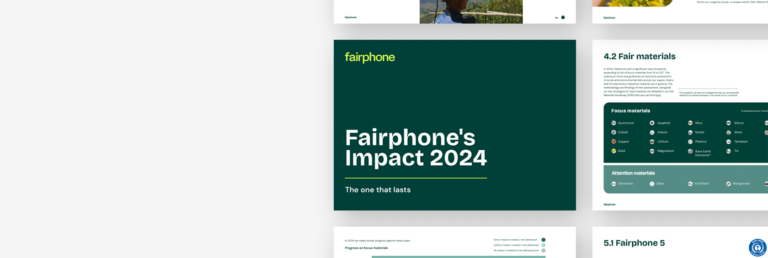Designing in Circles: The Great Recovery Project
Since the Great Recovery launched in 2012, we have been travelling the length and breadth of the UK, visiting recycling plants, remanufacturing facilities, and materials mines trying to understand what happens to our products at the end of their lives. It’s blindingly obvious that with our earth’s finite resources and our current model of “take-make-dispose,” we are going to reach crisis point very soon.
 Mobile phones are a perfect example. There is an estimated 85 million handsets sitting idle in homes in the UK, each containing on average 40 elements including gold and rare earths like tantalum. These elements are all currently lost to us, in the same way that the millions of tonnes of resources in landfill are. We need to find a way to prevent this flawed system, instead of simply digging more holes in the ground to throw rubbish in, and mine minerals out.
Mobile phones are a perfect example. There is an estimated 85 million handsets sitting idle in homes in the UK, each containing on average 40 elements including gold and rare earths like tantalum. These elements are all currently lost to us, in the same way that the millions of tonnes of resources in landfill are. We need to find a way to prevent this flawed system, instead of simply digging more holes in the ground to throw rubbish in, and mine minerals out.
Eighty percent (80%) of a product’s environmental impact is determined at the concept and design phase, proving that design plays a vital role when making the move from a linear to a circular economy. Here at the Great Recovery, we are working with designers to explore and establish the best practices to move to these circular systems, so we have mapped out four main models that we think designers can apply to products and brief.
 They are not all right for every product – part of the challenge is establishing which of these models works for your brief, which needs to be done at the very beginning of the design process to ensure that the chosen system is properly embedded.
They are not all right for every product – part of the challenge is establishing which of these models works for your brief, which needs to be done at the very beginning of the design process to ensure that the chosen system is properly embedded.
So let’s run through these four systems, imagining that we are applying them to a mobile phone:
1. Design for Longevity
I’m currently faced with a dilemma: upgrade my perfectly functioning iPhone to a higher model, or be left with a painfully slow internet connection. Why? Because I upgraded my phone’s software, only to be told afterwards that my older handset was “not compatible” with the system upgrade. Electronics manufacturers are using our desire for the newest things to force planned obsolescence – the constant need to buy new products so that they continue to function.
To design for longevity, the designers primary concern needs to be to create well-crafted products that the user will not want, or need to, throw away. When it breaks the user can fix or upgrade the product themselves.
It is great to see FairPhone adopting this model with their “Smartly Designed” manifesto, ensuring they are “conscientious about a design that lasts and that considers the whole life-cycle of the product.”
2. Design for Service
 New digital platforms and changing consumer behaviour are opening up worlds where we can share and lease products rather than own and buy. For a mobile phone, a leasing model would mean that the company would get the phone back when a newer model was required. They would then be able to repurpose or recover the materials in the old handset, ensuring their resources are staying within the company and can be used again. Service models require a complete system redesign as well as an understanding of added value to both the business and customer.
New digital platforms and changing consumer behaviour are opening up worlds where we can share and lease products rather than own and buy. For a mobile phone, a leasing model would mean that the company would get the phone back when a newer model was required. They would then be able to repurpose or recover the materials in the old handset, ensuring their resources are staying within the company and can be used again. Service models require a complete system redesign as well as an understanding of added value to both the business and customer.
3. Design for re-use in manufacture
The cost of remanufacturing a mobile phone could be reduced by 50% per device, if they were easier to take apart and there were an incentive to return them.
This route requires designers to work more closely with manufacturers to see where remanufacturing opportunities lie, and strong business models to ensure an incentive to both customer and business.
4. Design for material recovery
On our visit to Sweeep, an e-waste facility in Kent, we saw how mixed e-waste was smashed or ground to bits using hammers and industrial rock crushers. If products were easier and faster to take apart a lot more of the 40 elements that live in a mobile phone could be recovered. Could there be a hidden catch which means that the phone simply pops open, making the speed of disassembly radically faster? This requires designers to work closely with recovery businesses, to give them a true insight into what happens at the end of these products’ life, and how to make it easier to unlock the materials.

As you can see, all of these systems cannot be put into place by a designer alone. To move to a circular economy, we need designers to work alongside materials scientists, manufacturers, recovery experts, policy makers and investors to make this possible, and the Great Recovery is working to build networks across all of these different areas, promoting collaboration and partnerships to move towards more circular systems.
Hilary Chittenden is a designer working on the Great Recovery project at the RSA, building networks to encourage a circular economy.
All images provided by Hilary Chittenden and the Great Recovery Project. Full “Mobile Phone Periodic Table” available here.


